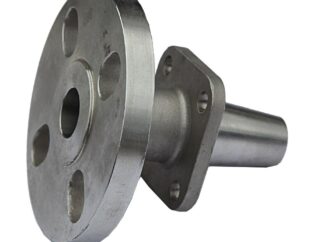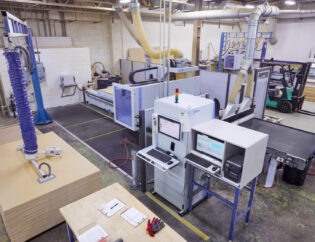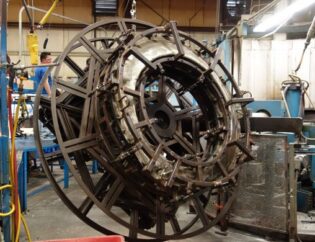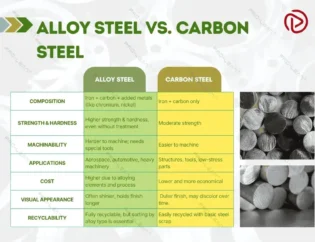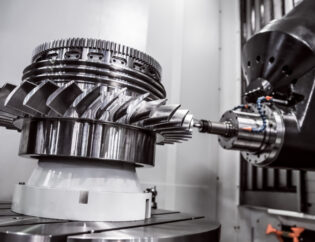Electro Discharge Machining (EDM) is a pivotal process in modern manufacturing, known for its precision and ability to create intricate shapes. Understanding EDM machining tolerances is crucial for engineers and manufacturers aiming to achieve optimal results. This guide delves into the nuances of tolerances, providing insights into their significance in ensuring quality and performance in machined components.
Readers can expect to explore various aspects of EDM machining tolerances, including definitions, measurement techniques, and industry standards. The guide will also cover the impact of tolerances on production efficiency and product reliability. By the end, you will have a comprehensive understanding of how to apply these tolerances effectively in your projects, enhancing both design and manufacturing processes.
Understanding EDM Machining Tolerances
Electrical Discharge Machining (EDM) is a critical tool for many modern manufacturing applications that has evolved over decades of use. One commonly used type of this machinery is wire EDM. This specific type of EDM uses a thin wire as an electrode to cut and shape solid metal pieces, and is often used for cutting solid steel.
To prevent the wire from wearing thin at the cutting point, it is usually continuously fed from a spool so the cutting surface is being constantly refreshed. The two types of EDM wire used in these machines are typically plain brass or zinc-coated copper or brass wires, depending on the application and whether you want greater service speed or lower cost.
Technical Features of Wire EDM
Wire EDM is known for its precision and ability to maintain tight tolerances, which are critical in high-precision industries such as aerospace and medical devices. Below is a comparison of the technical features of wire EDM:
| Feature | Description |
|---|---|
| Precision | Achieves tolerances as tight as ±0.0001 inches (0.00254 mm). |
| Cutting Speed | Typically ranges from 0.004 to 0.012 inches per minute. |
| Material Compatibility | Effective for conductive materials like steel, titanium, and copper. |
| Surface Finish | Produces a high-quality surface finish, often requiring minimal post-processing. |
| Heat-Affected Zone (HAZ) | Minimal HAZ due to localized heating, preserving material properties. |
| Wire Diameter | Commonly ranges from 0.004 to 0.012 inches, affecting precision and finish. |
Types of EDM
EDM technology encompasses various types, each suited for specific applications. Below is a comparison of the different types of EDM:
| Type | Description |
|---|---|
| Wire EDM | Utilizes a continuously moving wire to cut intricate shapes and details. |
| Sinker EDM | Uses a shaped electrode to create cavities in the workpiece through spark erosion. |
| Hole Popper EDM | Designed for drilling small, deep holes in hard materials with precision. |
Wire EDM is particularly favored in industries requiring extreme tolerances and fine detail, such as aerospace, medical devices, and tool and die making. For instance, at www.practicalmachinist.com, discussions often highlight the importance of wire EDM in achieving precise components.
Factors Affecting EDM Tolerances
Several factors influence the tolerances achievable with wire EDM:
-
Dielectric Fluid Purity: The purity of the dielectric solution affects the electrical discharge process. Regular monitoring and cleaning are essential to maintain tight tolerances.
-
Power Feed Quality: Degraded power feed cables can lead to inconsistencies in cutting accuracy. Regular checks and replacements can enhance performance.
-
Machine Maintenance: Regular maintenance of moving parts, such as pulleys and belts, is crucial for maintaining accuracy and preventing downtime.
-
Wire Condition: The condition of the wire used in the EDM process can significantly impact the quality of the cut. Regular replacement is necessary to ensure optimal performance.
- Environmental Factors: External factors such as temperature and humidity can also affect the machining process and tolerances.
Applications of Wire EDM
Wire EDM is versatile and widely used across various industries. Here are some notable applications:
– Aerospace: Cutting high-strength materials for engine components and turbine blades.
– Automotive: Producing intricate parts like injector nozzles and transmission components.
– Medical Devices: Creating precision instruments and implants requiring exact tolerances.
– Tool and Die Making: Manufacturing molds and dies that require fine details and durability.
– Electronics: Fabricating components with very fine features, such as semiconductor parts.
The ability of wire EDM to handle complex geometries makes it a preferred choice in these sectors. For more insights on EDM processes, reliableedm.com provides valuable resources.
Benefits of Wire EDM
Wire EDM offers several advantages that make it a preferred choice for high-precision manufacturing tasks:
– High Precision: Achieves tolerances as tight as 0.0001 inches, allowing for the production of extremely accurate parts.
– Complex Shapes: Capable of cutting intricate contours and complex patterns that are not possible with conventional machining methods.
– No Mechanical Stress: The process does not exert physical force on the part, thus there is no mechanical stress introduced into the material.
– Fine Surface Finish: Produces a high-quality surface finish, reducing or eliminating the need for post-processing.
– Material Versatility: Efficiently cuts through a wide range of materials, including hard metals like titanium and tool steel, without the need for pre-treatment.
These benefits make wire EDM a valuable technology in modern manufacturing. For further exploration of EDM capabilities, proleantech.com offers comprehensive insights.
Conclusion
Wire EDM technology is essential in modern manufacturing, known for its precision, reliability, and versatility. As industries continue to demand tighter tolerances and more complex geometries, wire EDM will play a critical role in meeting these challenges. The ongoing development of wire EDM technology promises even greater capabilities, enhancing speed, efficiency, and the range of applications.
FAQs
1. What is the typical tolerance range for wire EDM?
Wire EDM can achieve tolerances as tight as ±0.0001 inches (0.00254 mm), making it suitable for high-precision applications.
2. How does wire EDM compare to other machining methods?
Wire EDM excels in producing intricate shapes and fine details, while other methods may be faster for bulk material removal but lack the same precision.
3. What materials can be processed with wire EDM?
Wire EDM is effective for conductive materials such as steel, titanium, copper, and even some hard alloys.
4. How often should maintenance be performed on wire EDM machines?
Regular maintenance is crucial, with checks on wire condition, dielectric fluid, and moving parts recommended at least every few weeks.
5. What are the advantages of using wire EDM in manufacturing?
Wire EDM offers high precision, the ability to cut complex shapes, minimal mechanical stress on parts, and excellent surface finishes, making it ideal for various industries.

